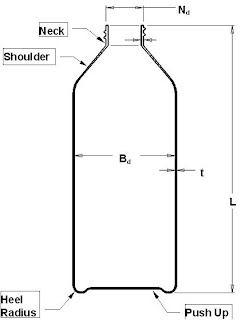Head tooling – extrusion blow molding

Mandrel and die dimensions are estimated based on container dimensional data, container symmetry, blow-up ratio, targeted container weight, neck finish requirements and the type of material (degree of parison swell) that will be used to produce the container. An initial blow-up ratio must be calculated using the container design dimensions and the required parison diameter. The required parison diameter will depend on the relative size of the container, the container design (handle or no handle) and the container neck finish requirements. Initial blow-up ratios may be calculated using the following equation. Blow up ratio = Bd / Nd where: Bd = Bottle diameter, in Nd = Minimum neck diameter, in The blow-up ratio is compared with the maximum recommended blow-up ratio of the selected material. Blow up ratios of 2 or 3 to 1 are considered normal when molding commodity resins such as polyethylene. A blow-up ratio as high as 4:1 is a practical upper limit. The blow up ratio for large contai...




